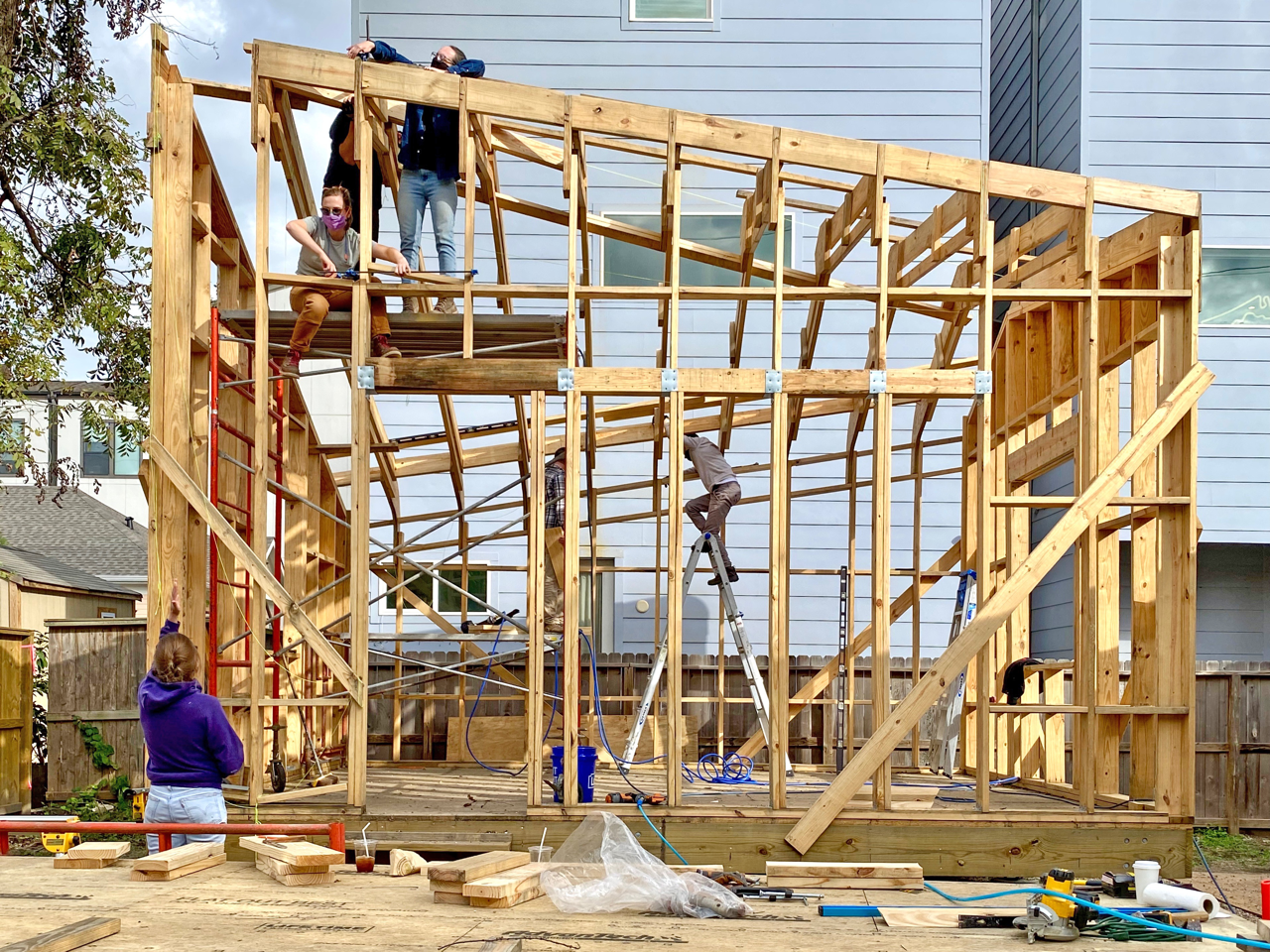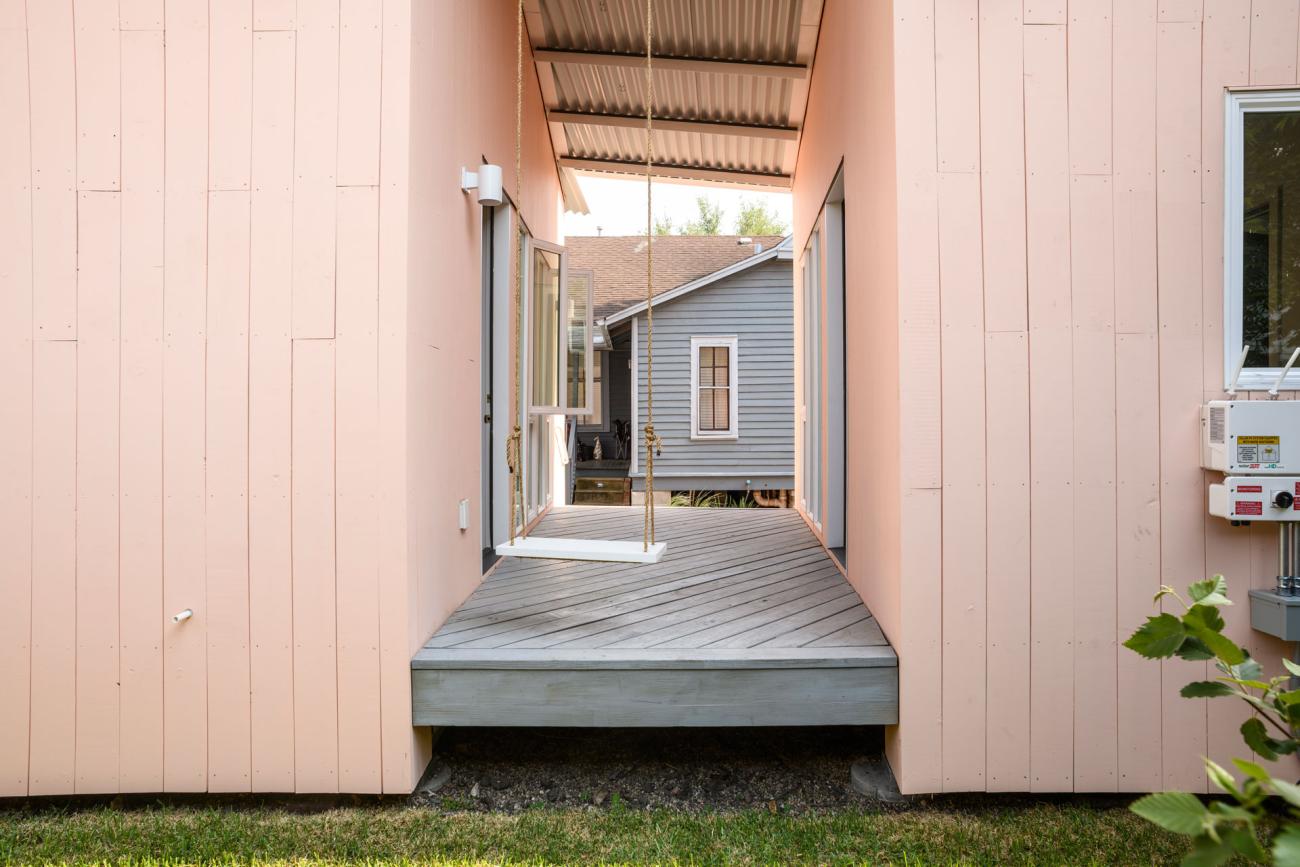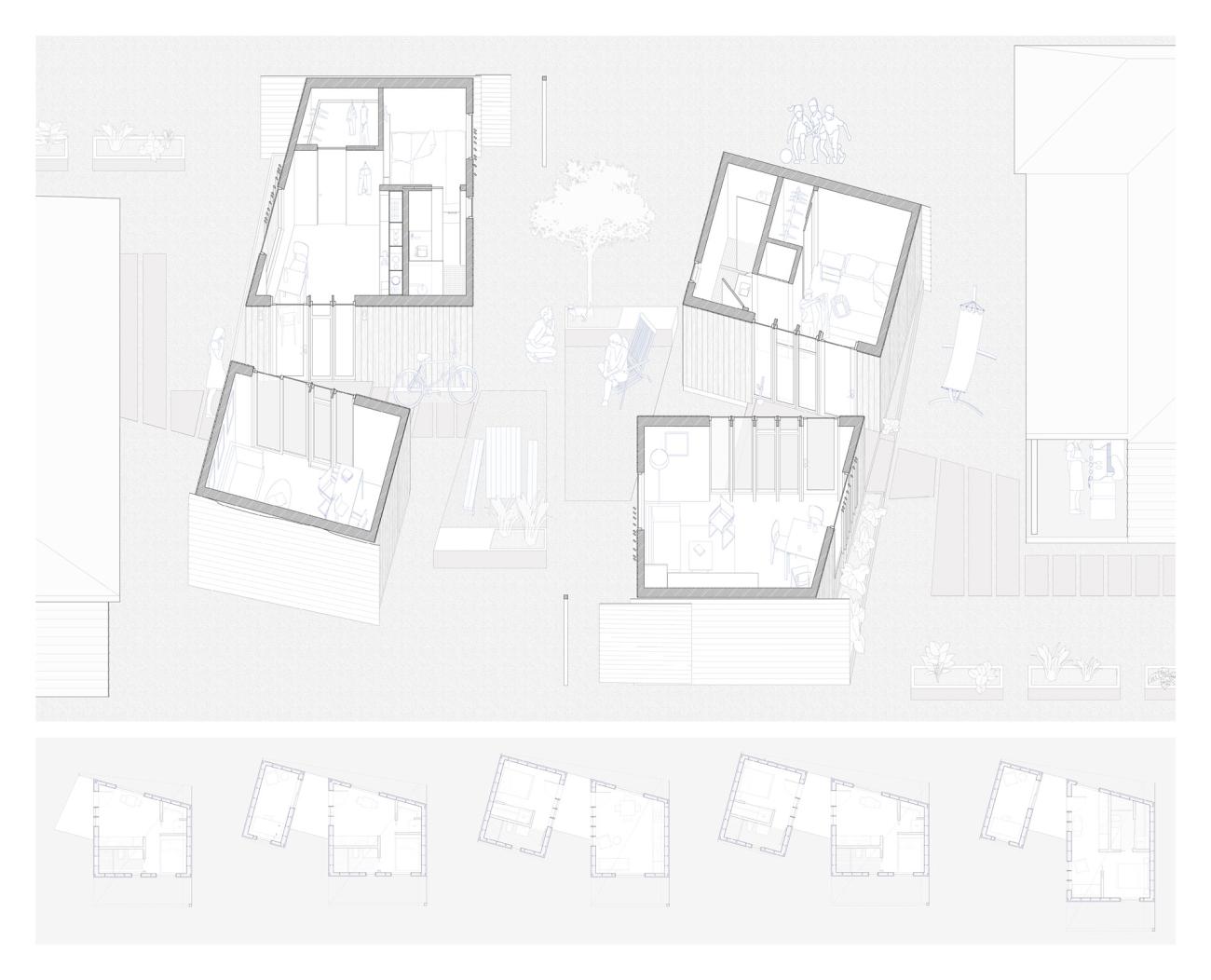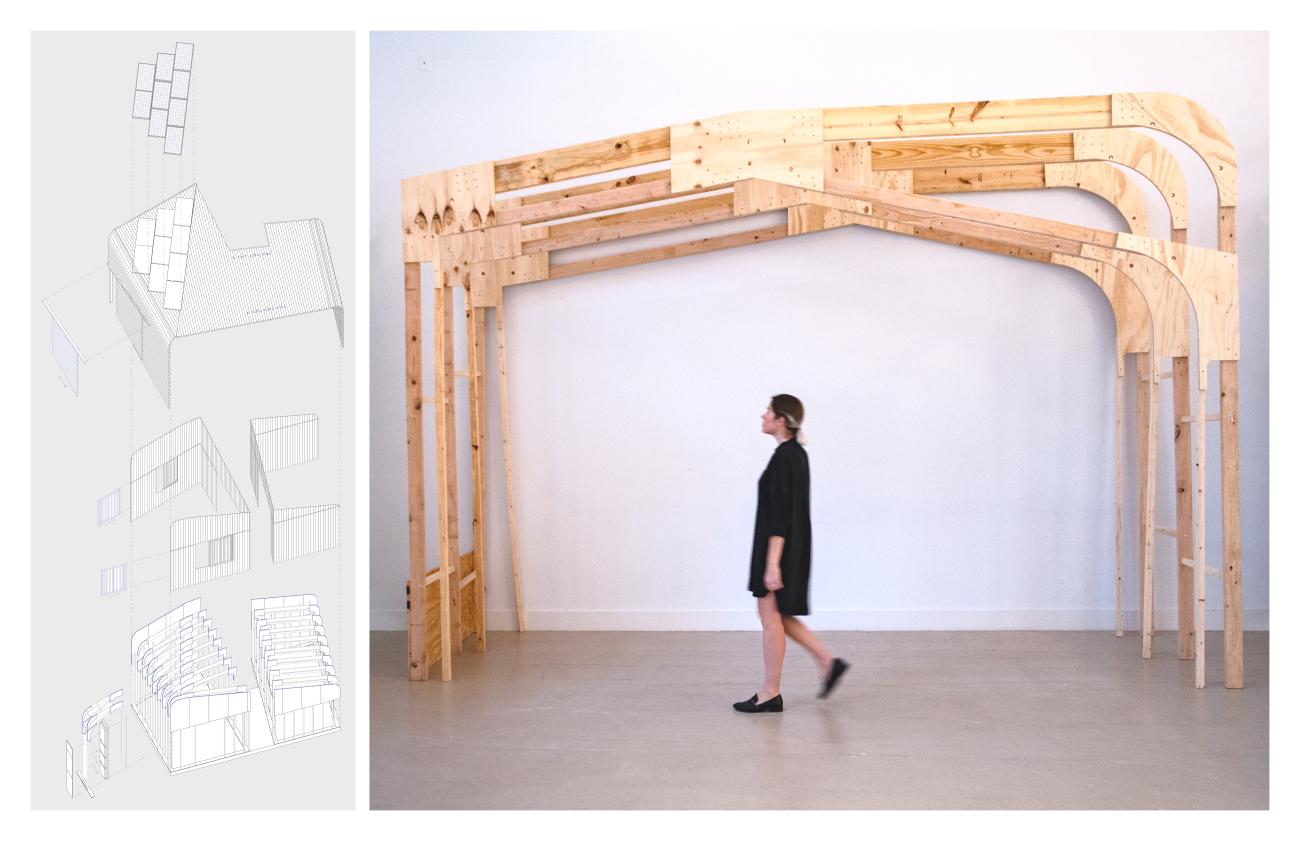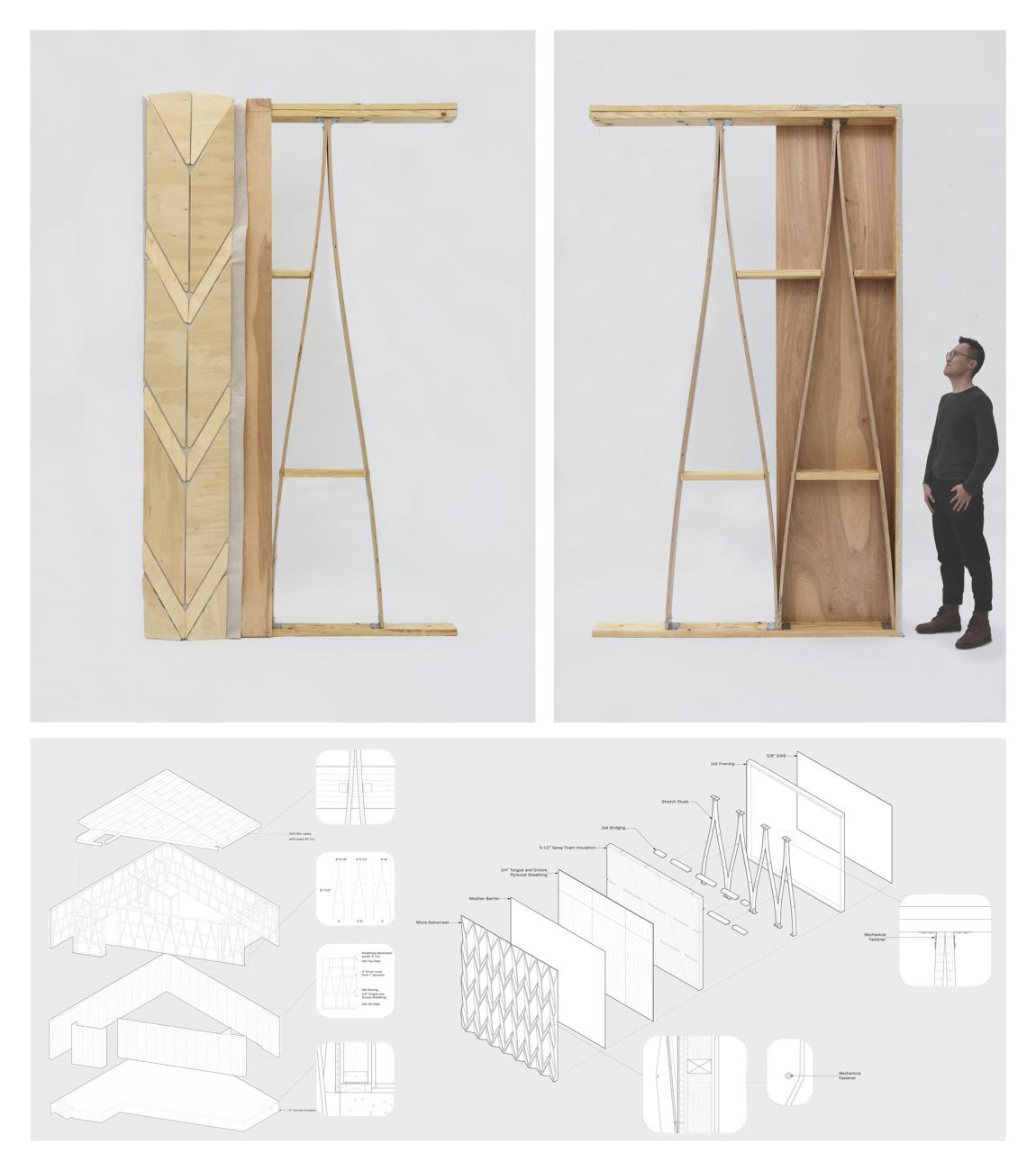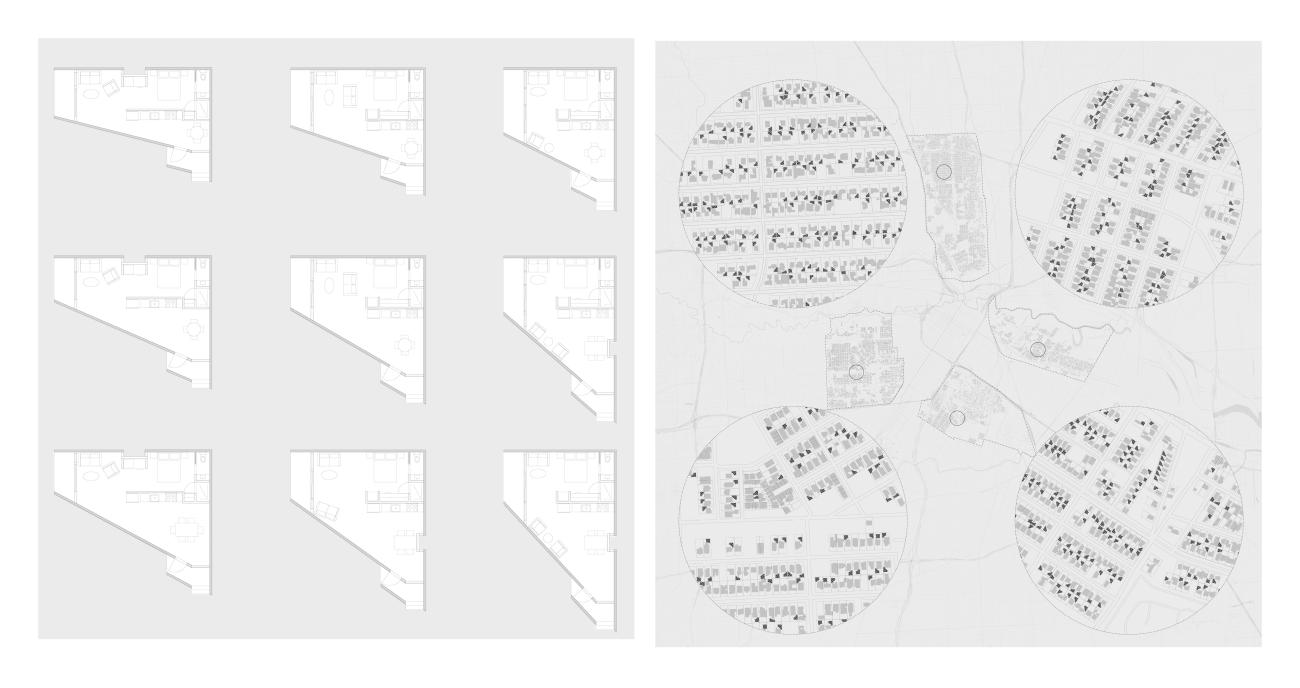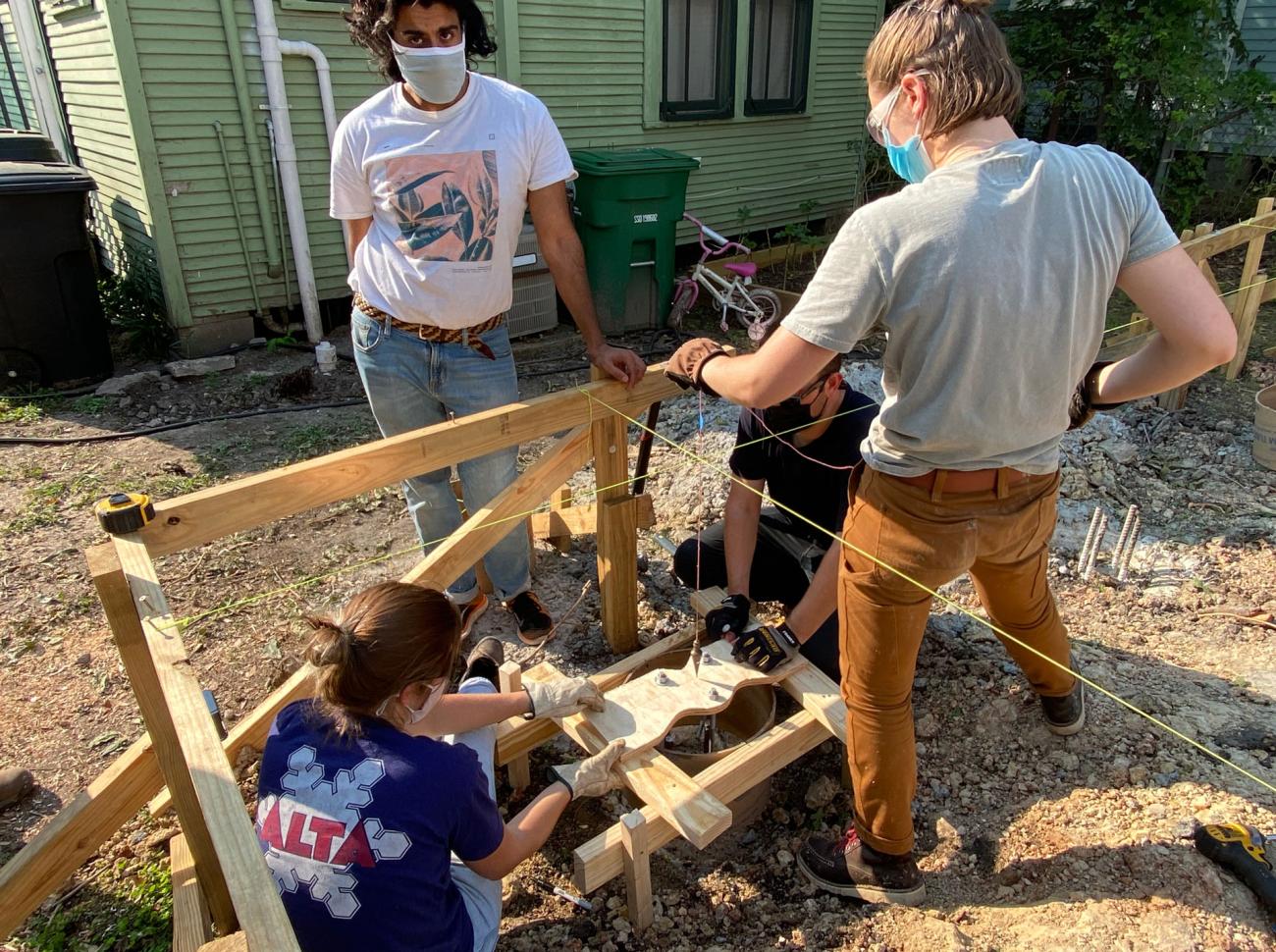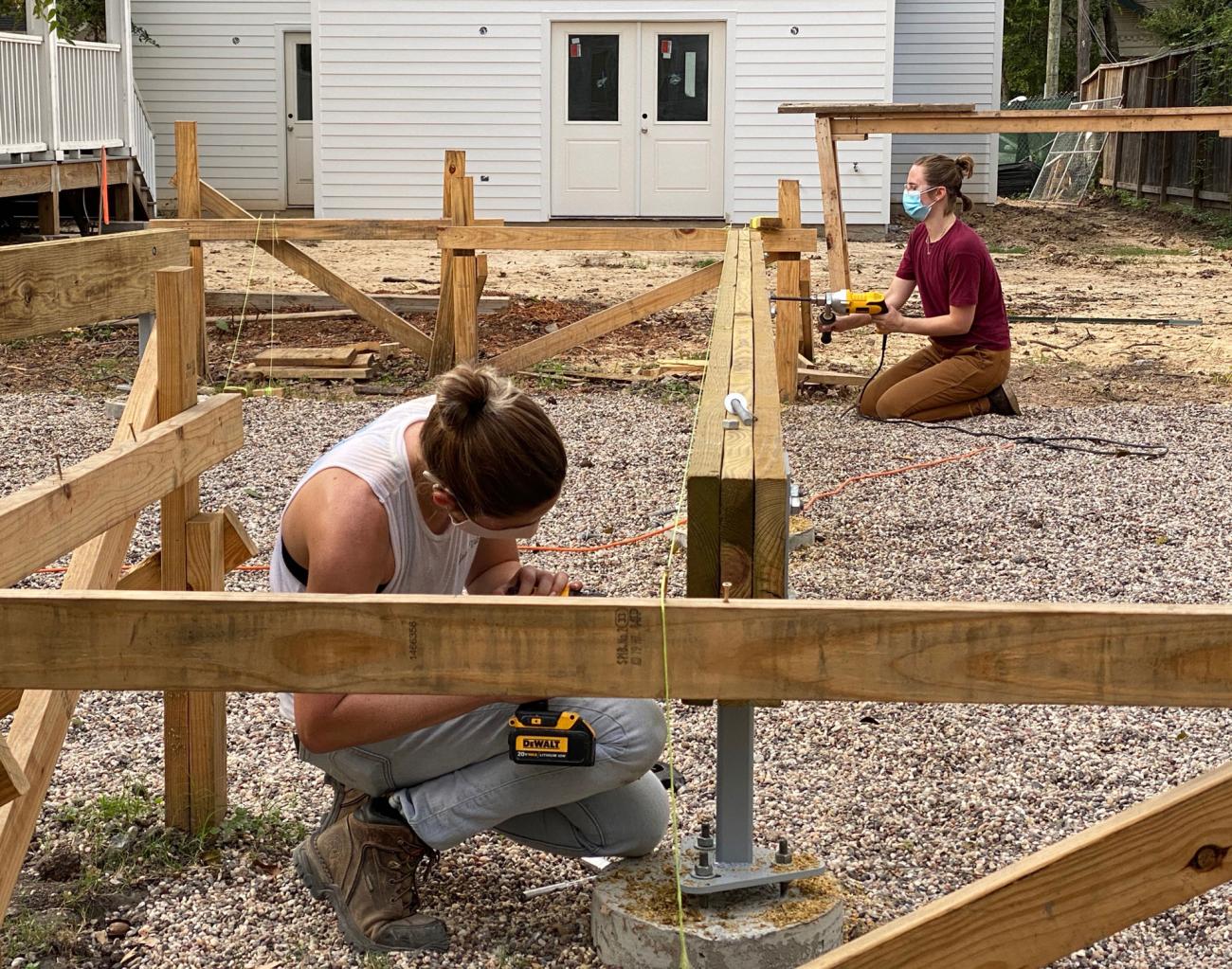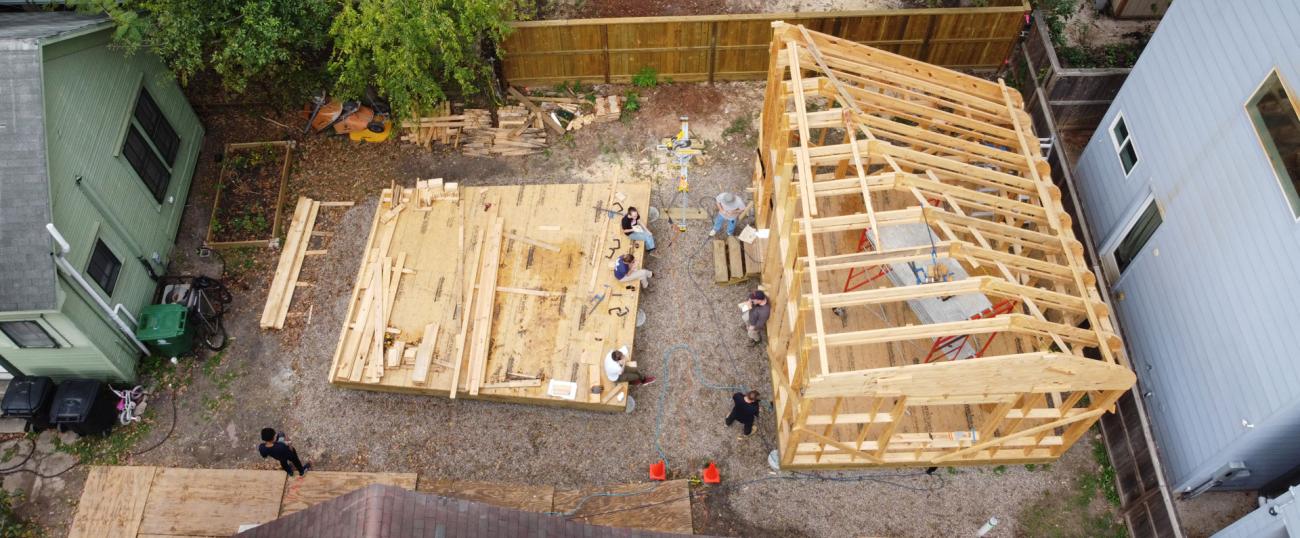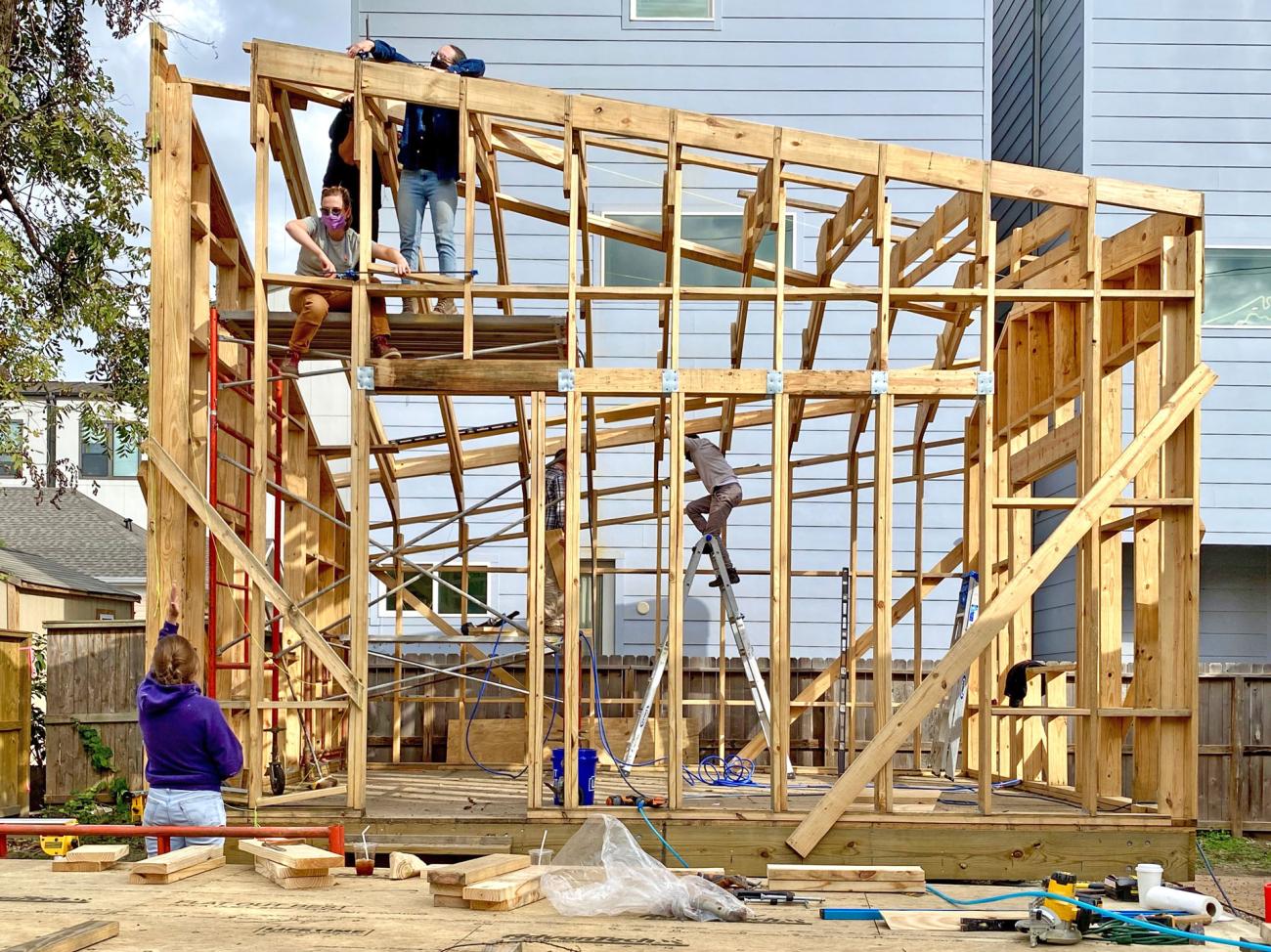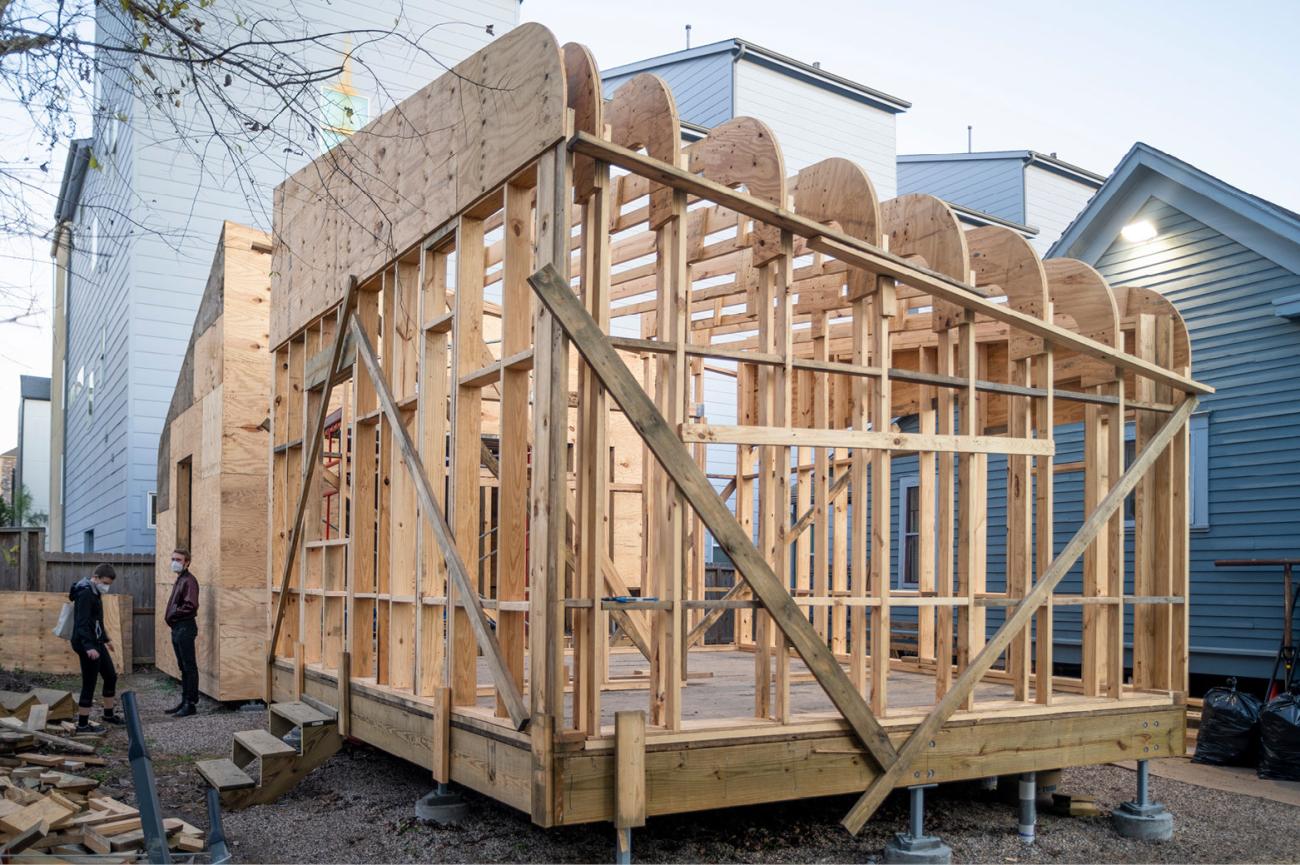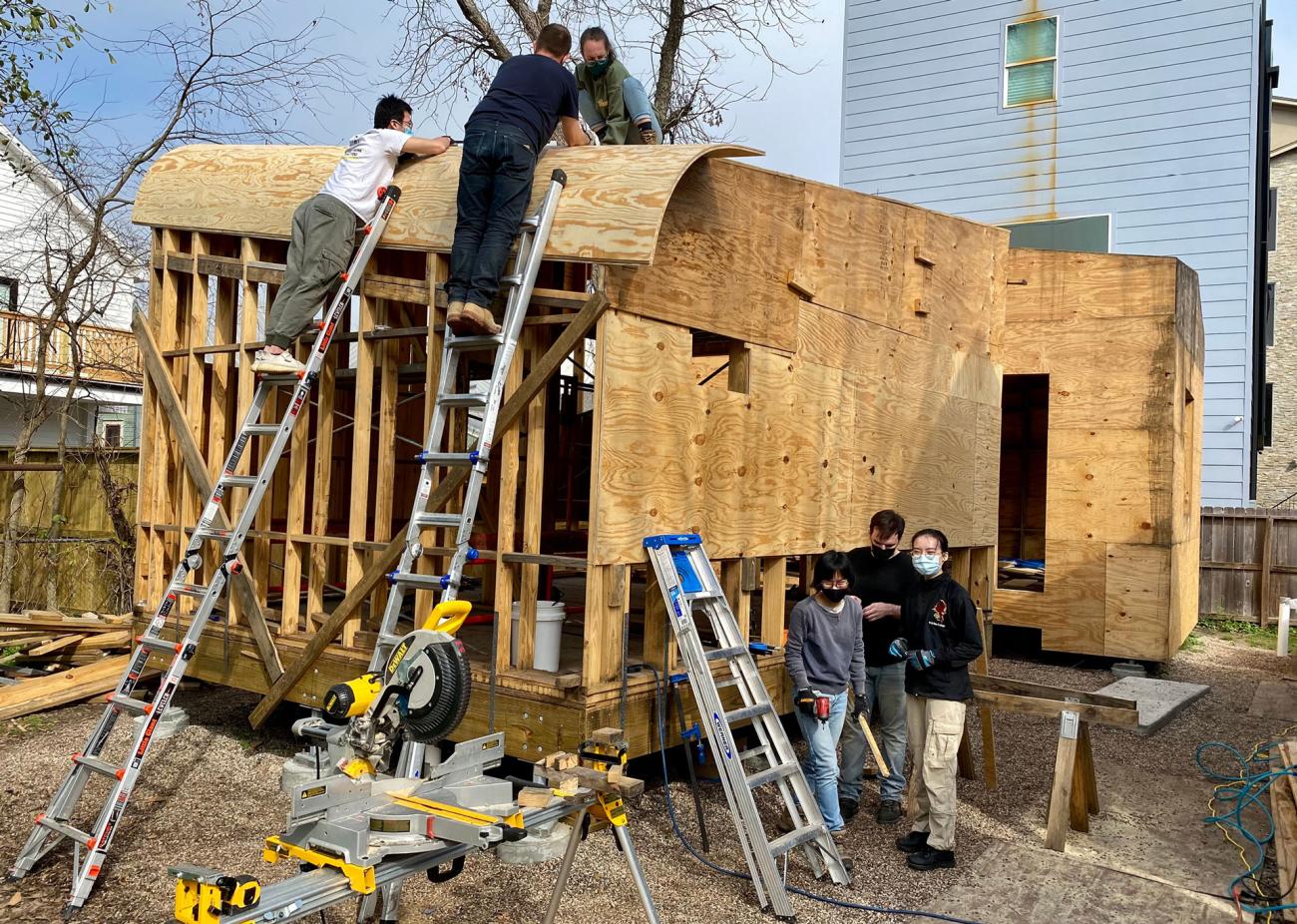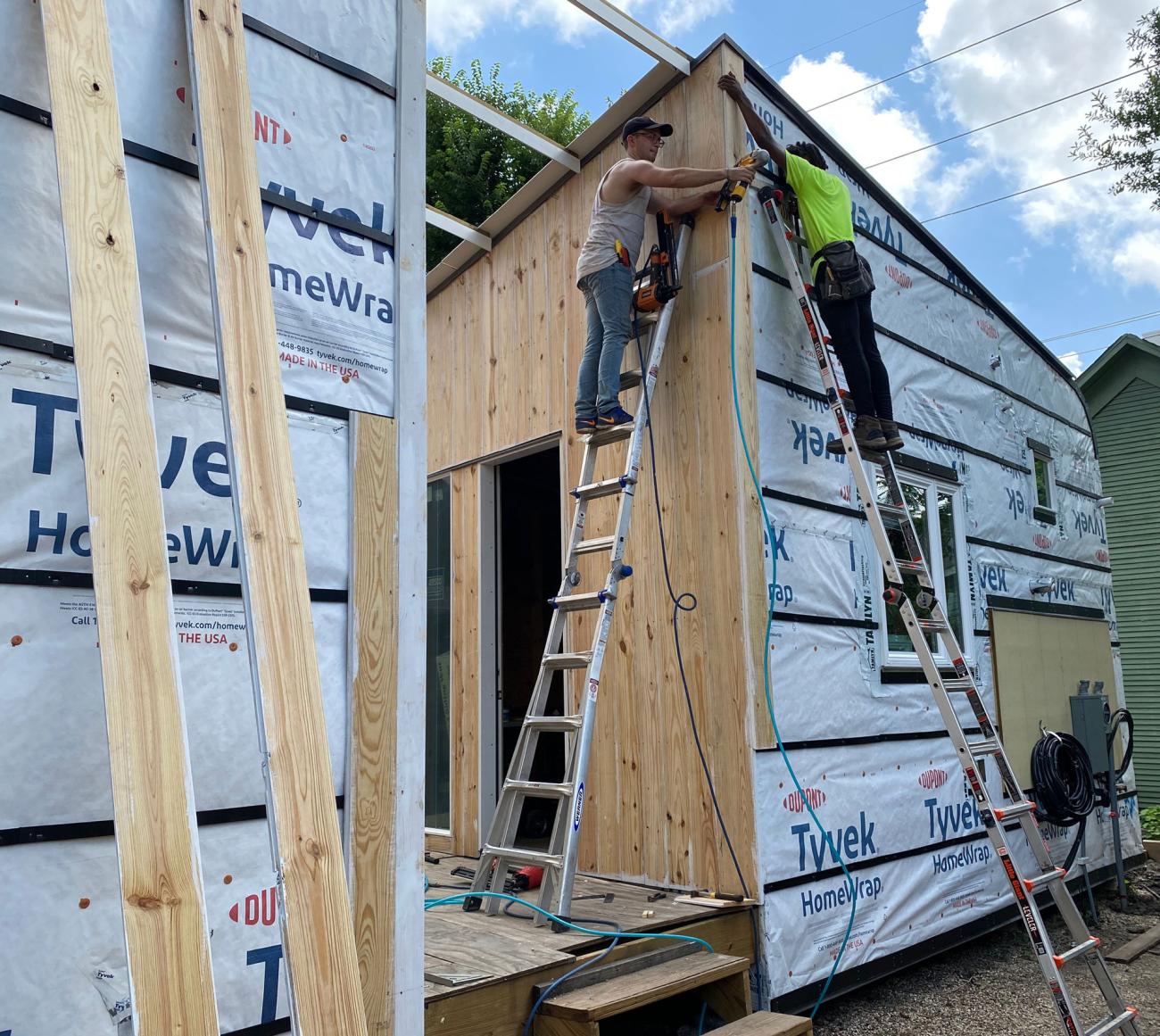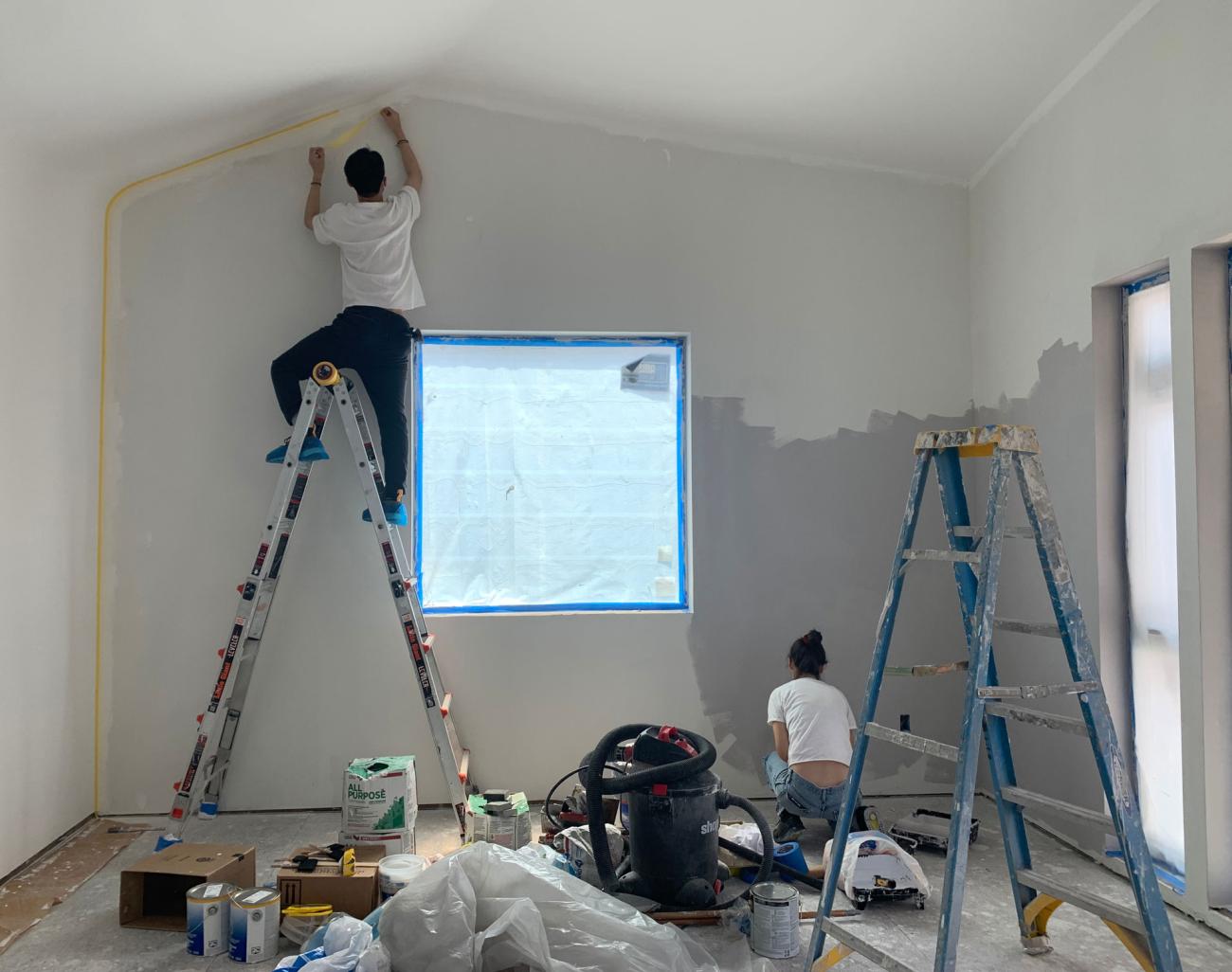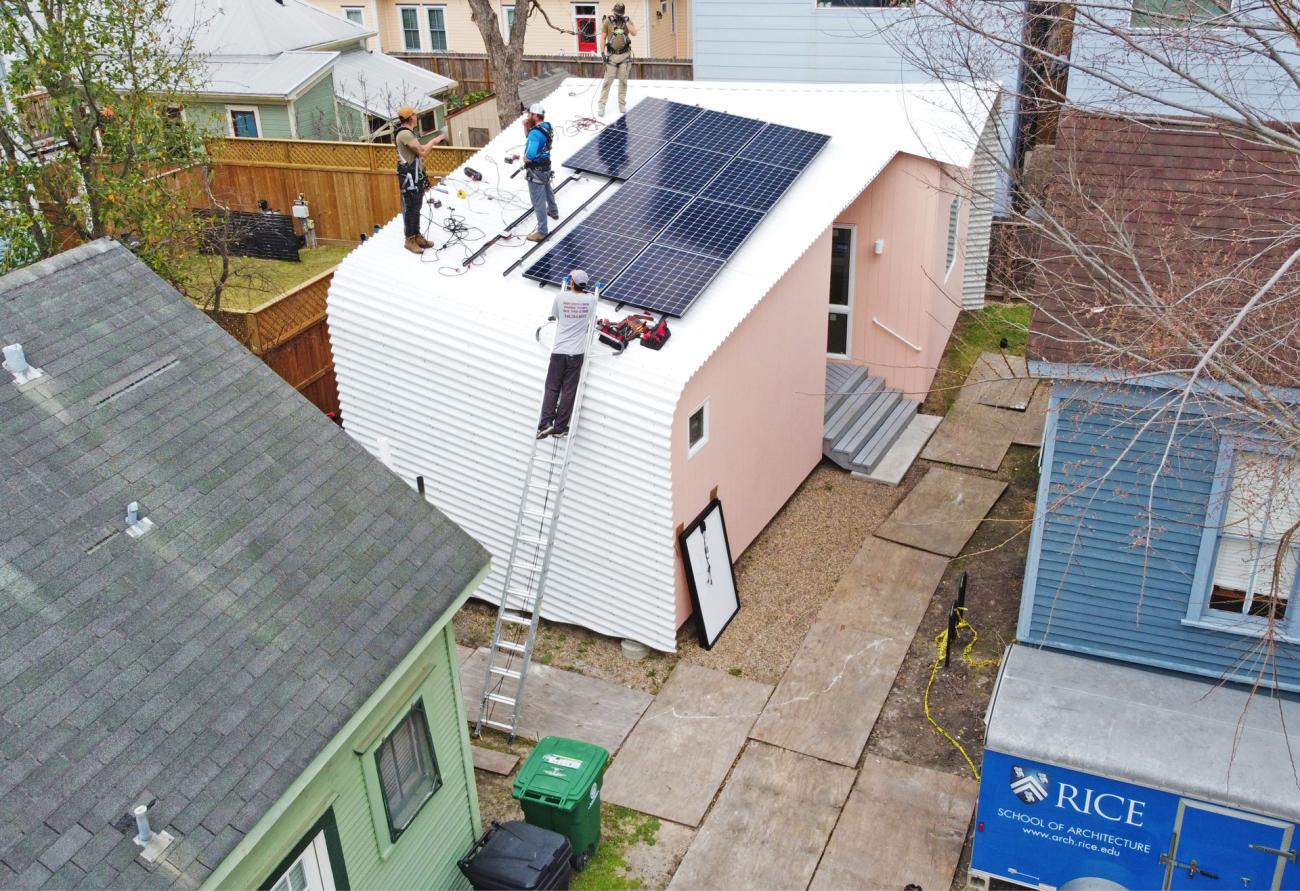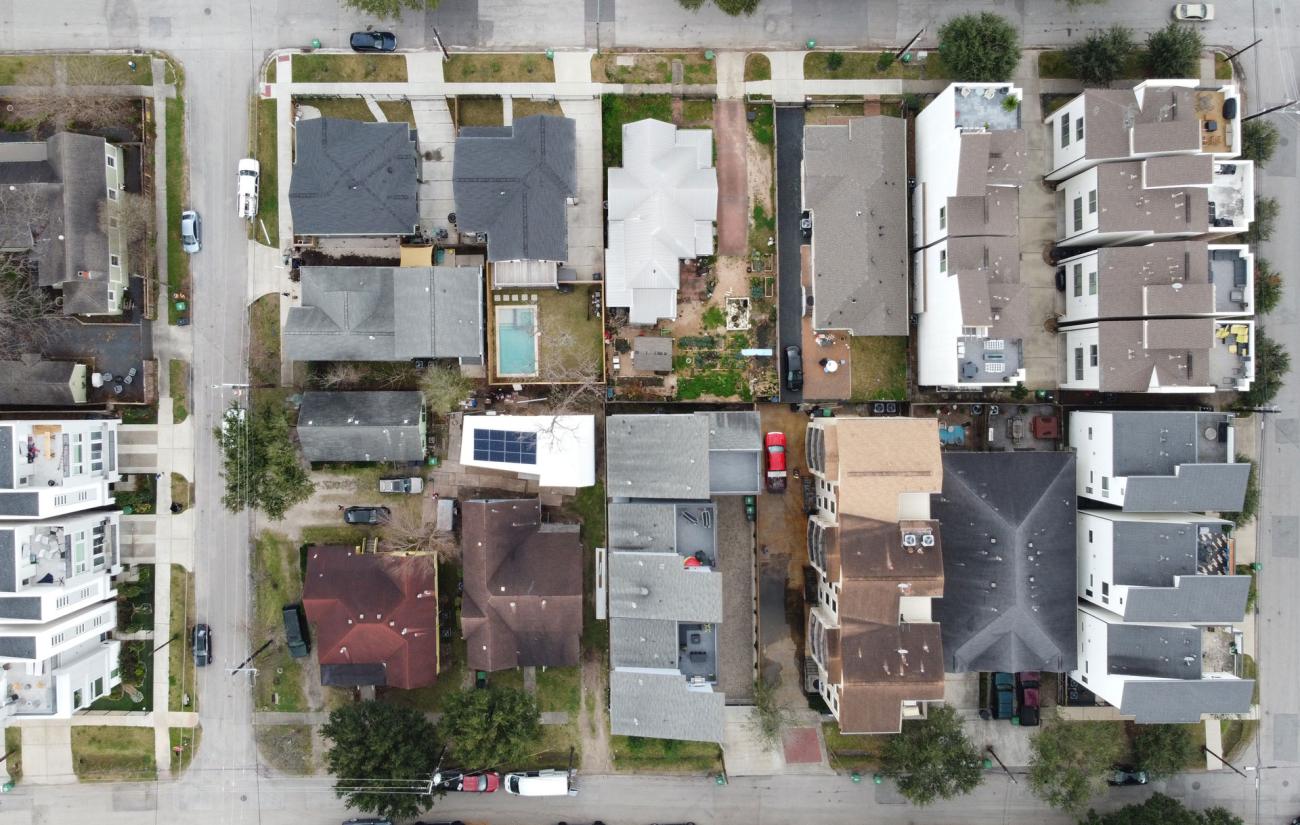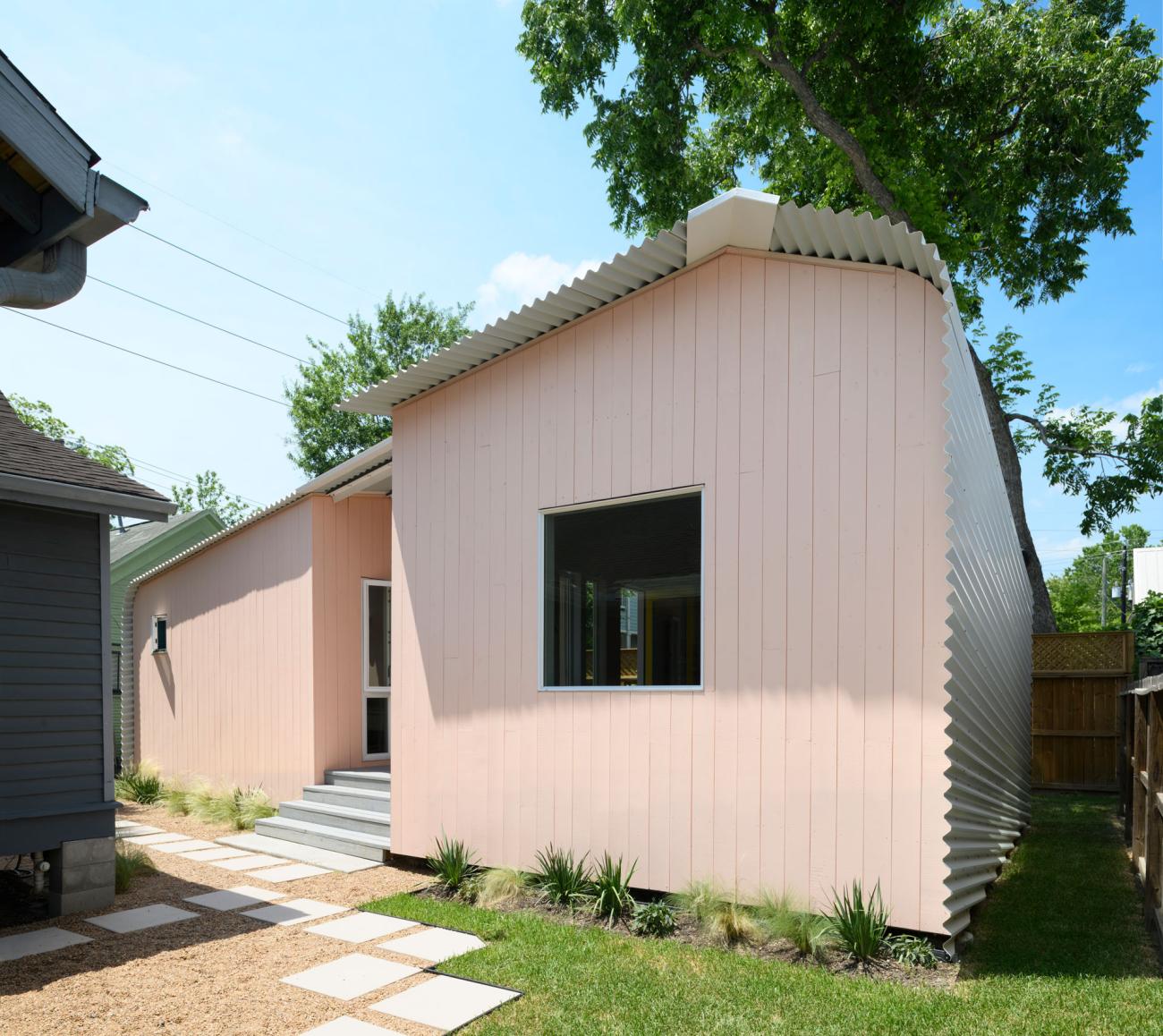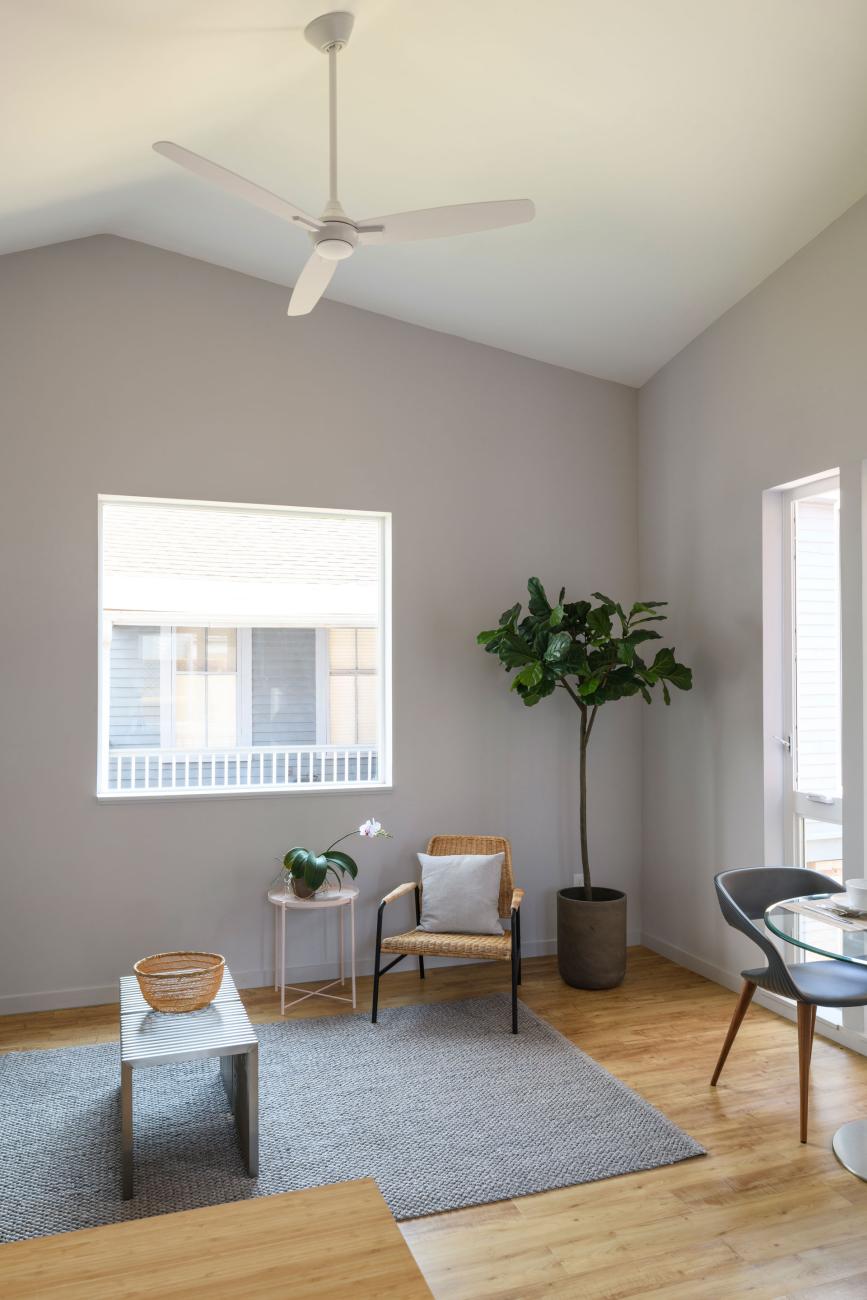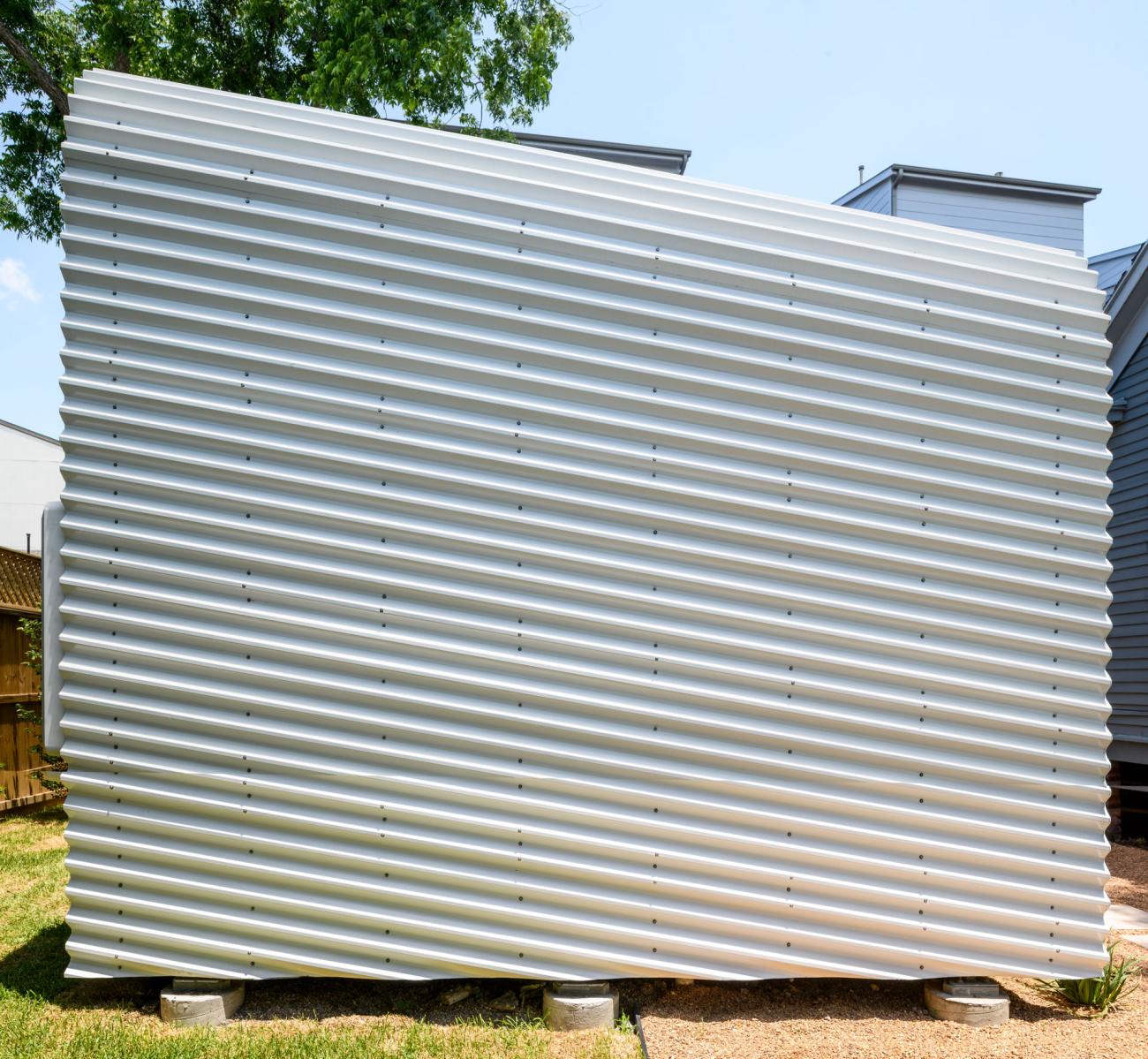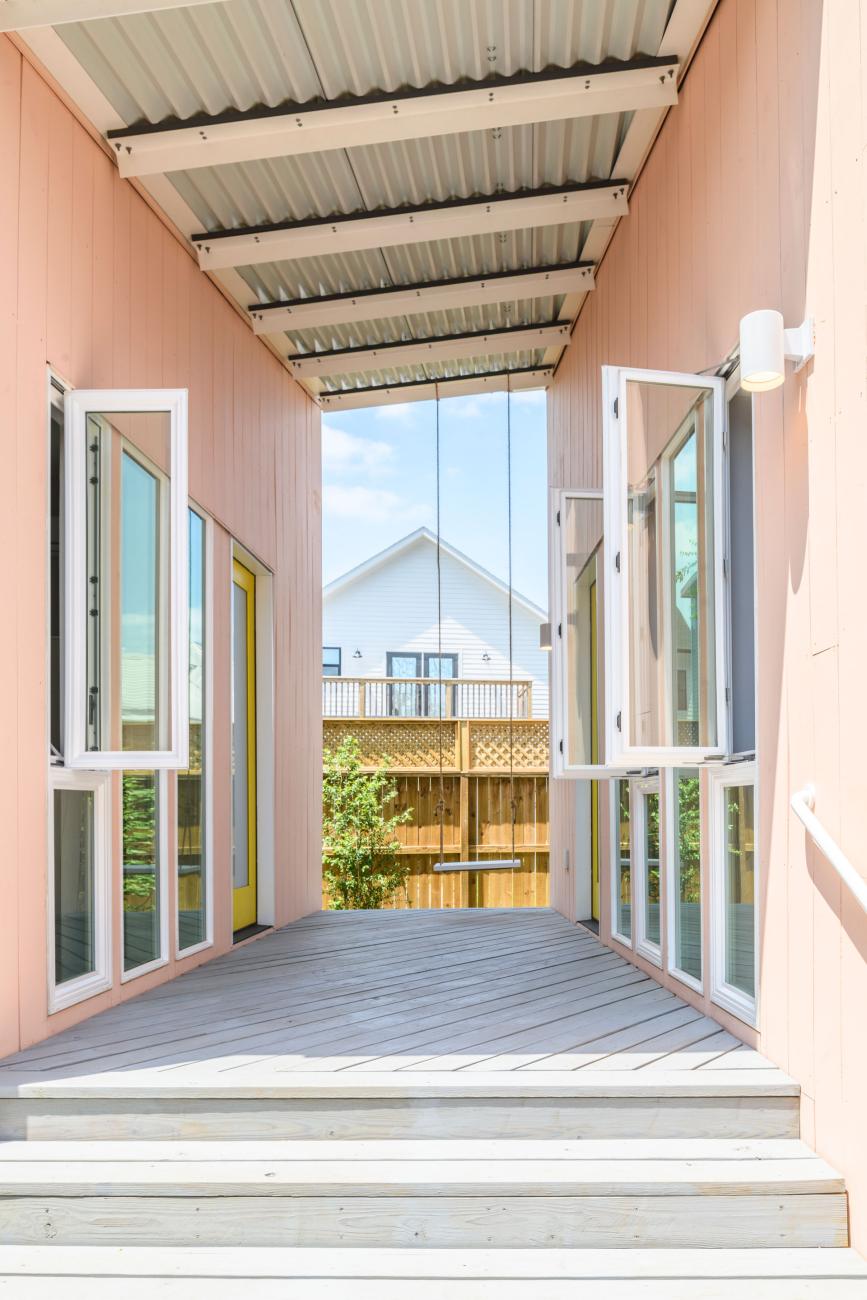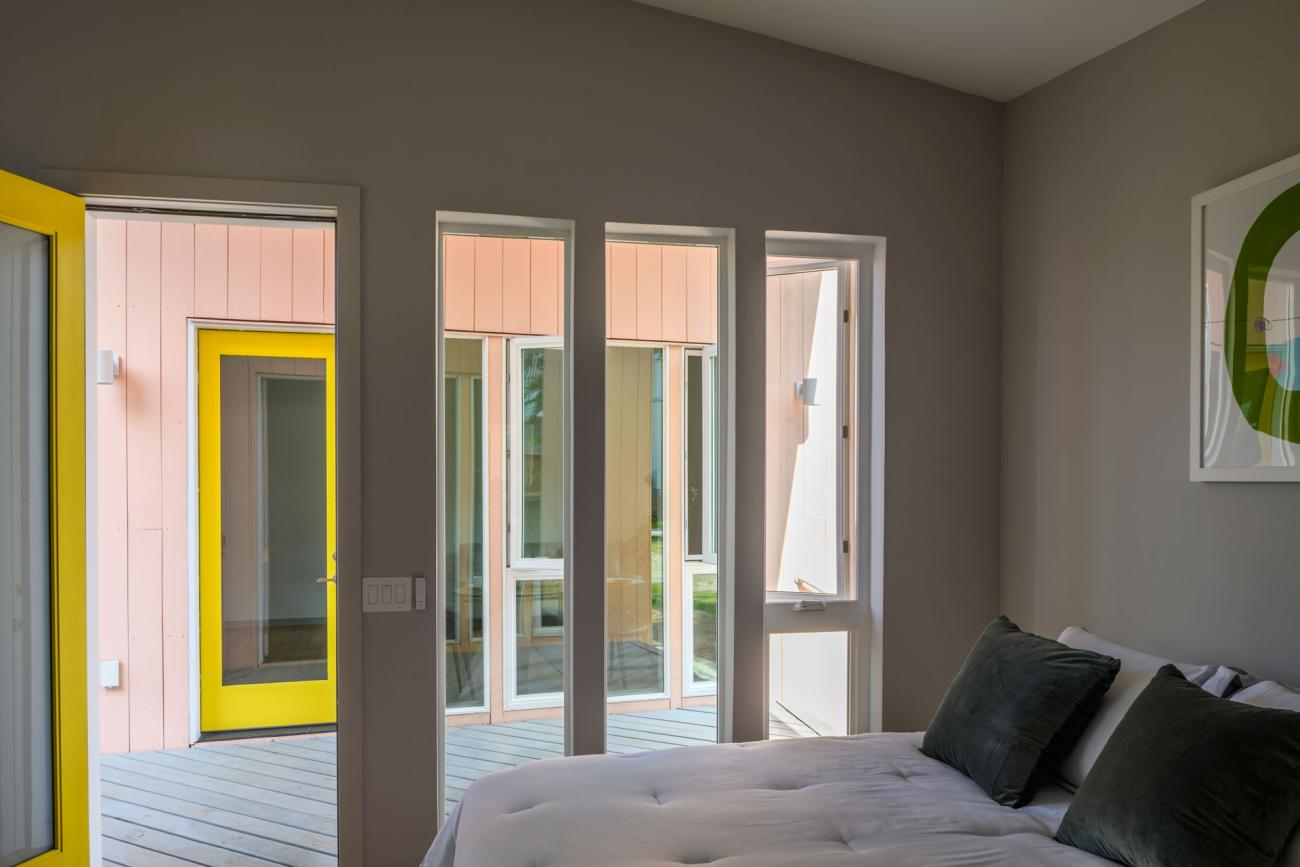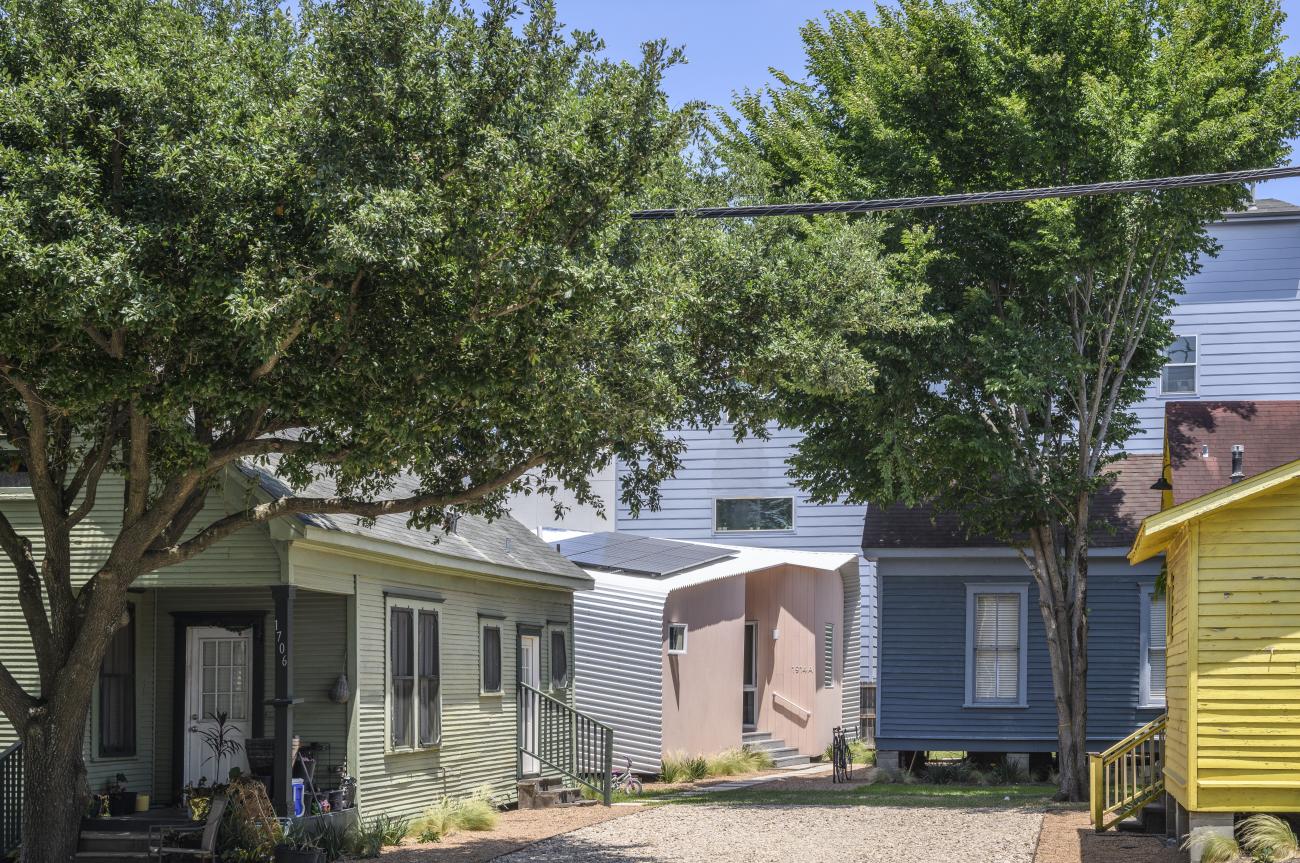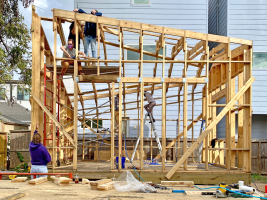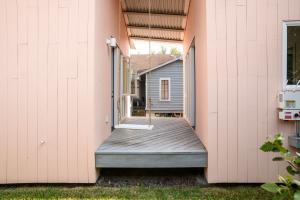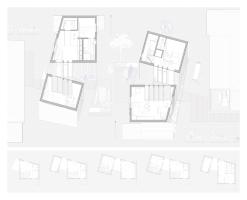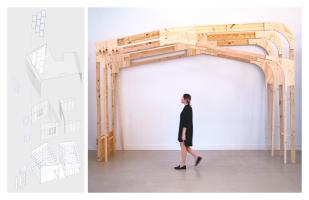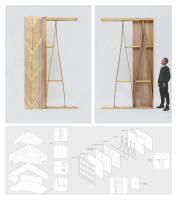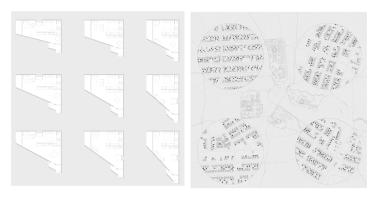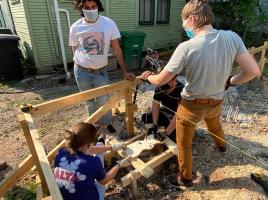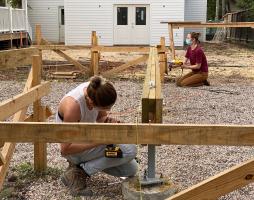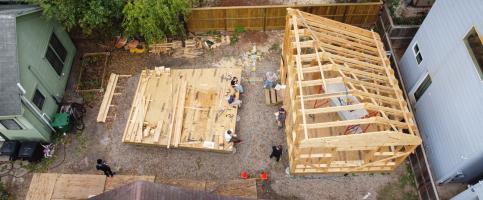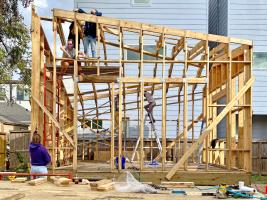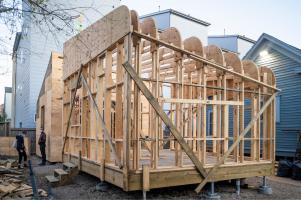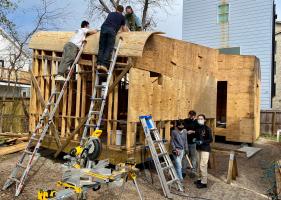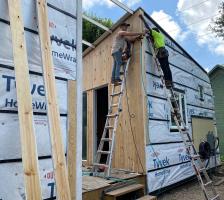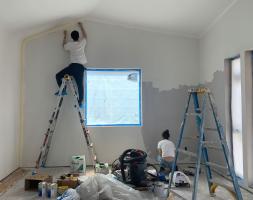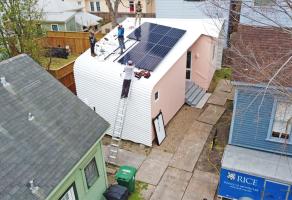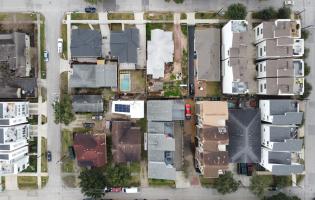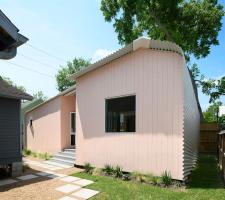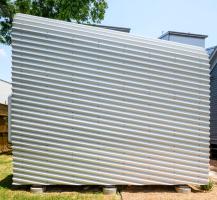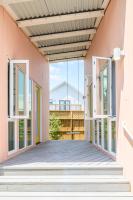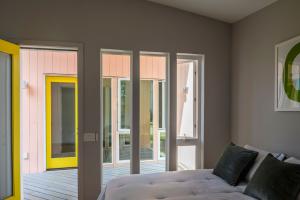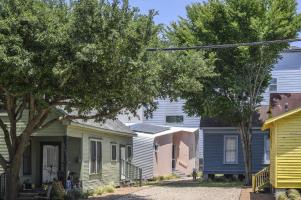Construct’s Auxiliary project examines the unique potential of the accessory dwelling unit (ADU) with respect to energy. The realized design incorporates power generation in an affordable home predicted to generate more energy than it consumes—a net-positive ADU.
For Construct’s third ADU research project, students were asked to design a net-positive prototype that would bring together PV/battery technology with an energy efficient and automated approach to building design and fabrication. Prototypes had to be adaptable to variable site conditions and incorporate a novel, low-cost but high-performance approach to the building envelope. These assemblies were analyzed for their thermal efficiency and integrated within a full energy model—first evaluating the prototype and then extrapolating performance across thousands of possible sites in central Houston.
The most energy efficient proposal by students Kati Gullick (M.Arch. ’21) and Madeleine Pelzel (B.Arch. ’20) was selected to advance. Their design consists of two parts: daytime (living/kitchen) and evening (sleeping/bath) spaces connected by a covered exterior deck, a form that recalls a familiar vernacular type, the “dog-trot.” The two parts—air conditioned independently and as needed—enable dramatically reduced energy consumption. The approach was made more efficient by a double-stud portal frame system developed by the students to minimize thermal bridging, ease construction, and optimize roof angles for solar performance.
Construct partnered with Avenue CDC, an affordable housing nonprofit, to adapt the design for the backyard of a historic 1930s bungalow the organization rents in Houston’s First Ward. After developing construction documentation and permitting, students worked to build the project over the course of three semesters and an intervening summer.
The Auxiliary project was funded in part by Rice’s Center for Environmental Studies, the Susan Vaughan Foundation, PearlX, and Freedom Solar.
Studio: Kalyani Bhatt, Kati Gullick, Madeleine Pelzel, Sarah Lumelsky, Shikun Tang, Steve Hu, Vera Tian, Xiangcheng Xing
Seminars: Alex Oetzel, Alida Fabrega, Andrea Machado, Andrew Clifton, Anna Brancaccio, Ashley Whitesides, Ava Chen, Beixi Zhu, Belle Carroll, Benson Xie, Charley Fu, Christian Ayala-Lopez, Claire Wagner, Dani Latif, Dante Gil Rivas, Eric Baik, Estefania Barajas, Esther Tang, Henry Taibi, Ho Jung (Sam) Rhee, Ignis Zhang, Isabella de la Iglesia, Ivan Dye, Jeremy Harrienger, Jessica LaBarbera, Jianing Cui, Joseph Hsu, Katherine Hui, Kati Gullick, Lauren Phillips, Madeleine Pelzel, Mai Okimoto, Margaret Tudor, Melisa Pekiyi, Michael Xu, Michelle Schneider, Nell El Souri, Noah (Kip) Langat, Phoebe Cox, Ryan Lipscomb, Siobhan Finlay, Steve Hu, Taylor Rigsby, Tianle (David) Chen, Tony Dai, Wanting Zhou, Wenyi Zheng, Xueyuan Wang, Yufei Wang, Yuhan Chen
Faculty: Andrew Colopy and Danny Samuels, Construct Co-Directors; Dominic Boyer, Co-PI
Consultants: Joey Romano and Joe Meppelink (industry/energy advisors); Silman Associates (structure); Wylie Consulting Engineers (MEP)


